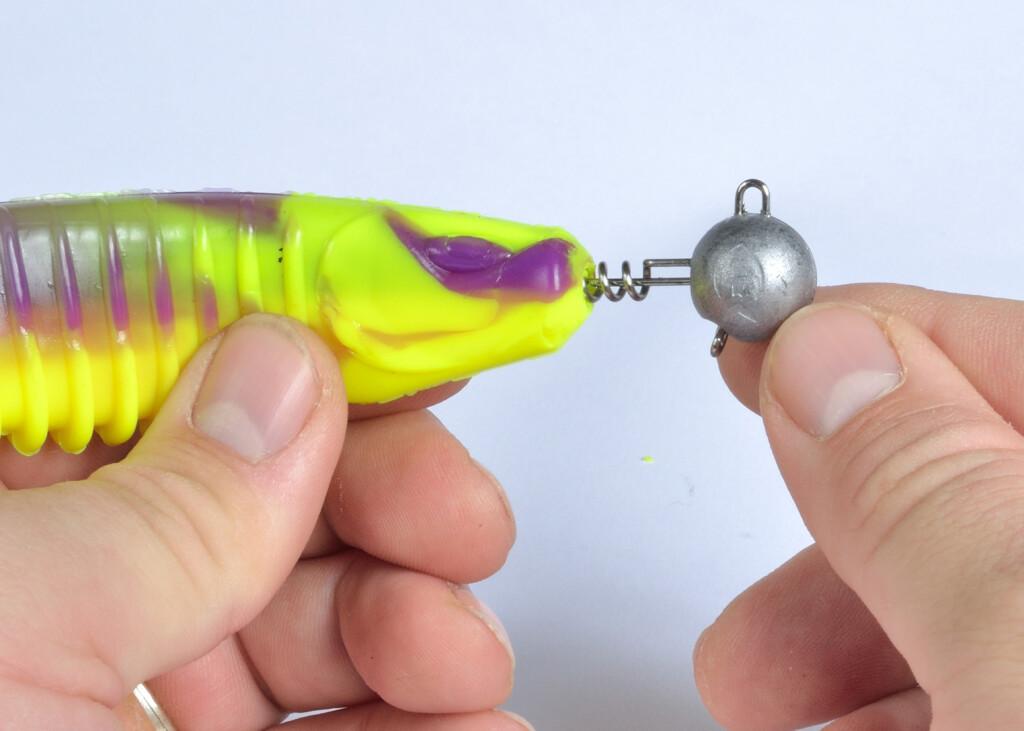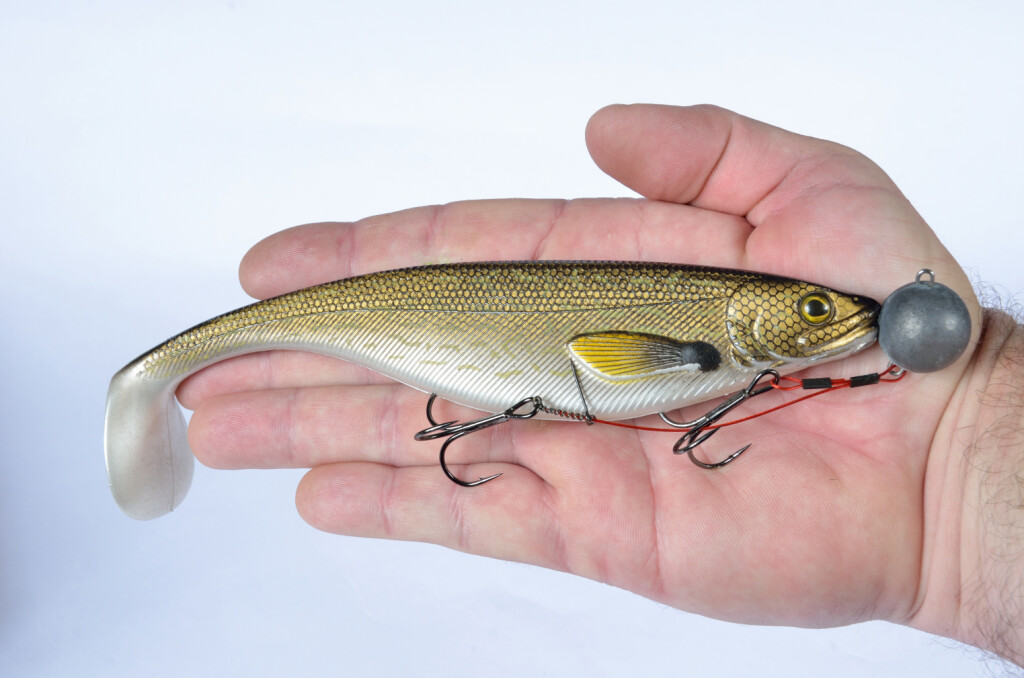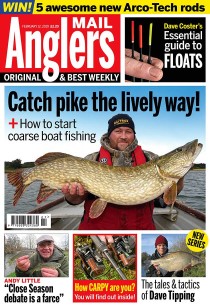Soft Plastics – Rigging
I think it’s fair to say that the vast majority of lures that are cast today are soft plastics in various guises. There is a very simple reason for this – they are extremely effective – not only for pike, but in smaller versions for zander and perch as well.
A lot of soft plastic lures these days come ready rigged, most of the time with internal weighing rather than a jig head, and most come with a single belly-rigged treble hook. For the majority of anglers these will suffice, however, for some, there is a need to change the weight / sink rate of the lure, or the position of the hooks. These anglers find un-rigged shads a far better option.
Though un-rigged shads are probably the best choice for flexibility in fishing techniques, there are some common mistakes in rigging them;
Wrong hook size:
The main jig hook needs to be the correct size for the lure you are using, the most common mistake I see is anglers using too big, or rather, too long a jig hook. The common misconception is that using a bigger hook will increase hook-ups. However using a hook too big puts too much of a “backbone” in the lure, which in turn reduces the lure’s action – which will reduce takes in the first place. It is far better to use a smaller hook and fish it in conjunction with a secondary stinger.
A good rule of thumb is for a 4 inch shad use a 3/0 – 4/0 jig hook, a 6 inch shad requires a 5/0 – 6/0 hook. Bigger shads than this are better fished with a screw-in jig head and double treble stingers.
Wonky:
It is critical to put your jig hook in the lure correctly, and it’s a skill that comes with time, and more experienced anglers can possibly do it blindfolded. However, it can be tricky, I lay my hook along the bait and pinch it where the hook should come out, so I have a guide of where to thread the hook. It should go in straight with no kinks in the lure at all. If there is a kink or the hook isn’t straight the lure won’t fish effectively, and it is something I am obsessive with – if it doesn’t look right I will re-rig. If you are struggling getting a jig hook in the right location, swap to screw-in jig heads.
Jig head weight;
Choosing the right weight for the jig head is also critical as this will affect lots of things – such as depth the lure will fish, fall rate, even body roll and action.
The most common mistake I see here is using too light a jig head, often it’s better to use a heavier one to keep the lure down where you need it to be, certainly for straight retrieve styles. A heavier jig head will also put more action in the lure on the fall. Sometimes if the weight is too light the lure will simply sink on tight line and not “swim” at all, which is contrary to what most people believe when using light weights.
The weight of the jig hook also affects the action and the roll of the lure. Some lures can be fished un-weighted for very shallow water, but most work better with some weight at the front. By manipulating the jig hook weight you can change the swimming action of the lure. Generally, the more weight the less roll and more stable the lure will be in the water, and it can be fished faster. There is a very subtle difference in how a lure behaves with a 15g jig head and one with a 30g jig head. However this subtle difference can make a massive difference to the fish.
Rigging for depth of water: as a rough guide for casting with 6 inch shads – use 10g per 10 feet of water – so if you are fishing at 20ft depth then 20g jig head is about right – 30ft – 30g and so on.
Stinger placement;
Stingers are so important on soft plastic baits, often they are the hook that catches the fish, with the main hook mainly acting as the weight for the lure. However, where and how you place them on the lure is critical to them working correctly.
The absolute best place to put the stinger is where the vent would be if the lure were a real fish. This tends to be a strike point, certainly for zander. For pike not so much, but it is an area where the hook can hang and easily catch hold in the fish’s mouth. Rigging a stinger hook here can also help balance the lure out in the water, and makes it more stable.
Using a stinger spike to push into the bait is the best way to mount the stinger in this area, as it allows the hook to hang naturally, and all three points to be proud of the bait.
If you are fishing your lure close to the bottom you may want to move the stinger hook and place it on top of the lure. This will prevent, or help reduce it snagging and picking up debris. The downside is that it can change the action of the lure and make it top heavy, unless you use a big jig head.
Don’t be tempted to put a stinger on the tail of the lure, this wrecks the action of the lure and prevents the fish hitting them in the first place. If you are not connecting with hits it’s possible that the fish aren’t really in a feeding mood, or your stinger is too small. I generally use size 2 stinger hooks on 6 inch shads, which may seem large, but I don’t miss many fish.
Hook placement:
1. Lay the hook along the lure for a guide to where it should come out.
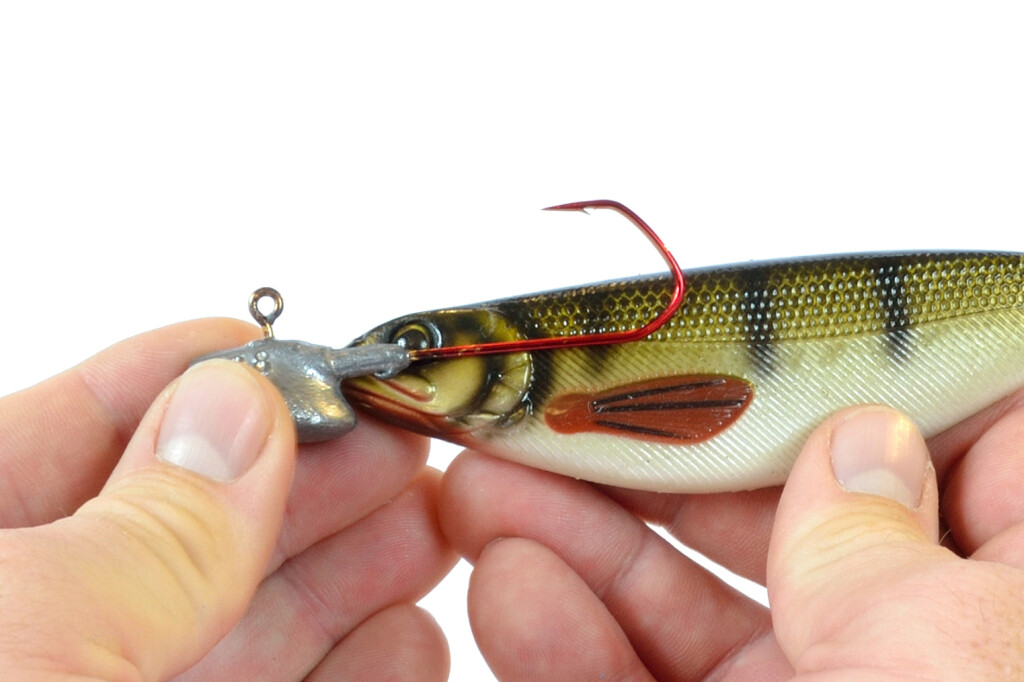
2. Put the hook in the lure and keep it straight, threading it down the lure.
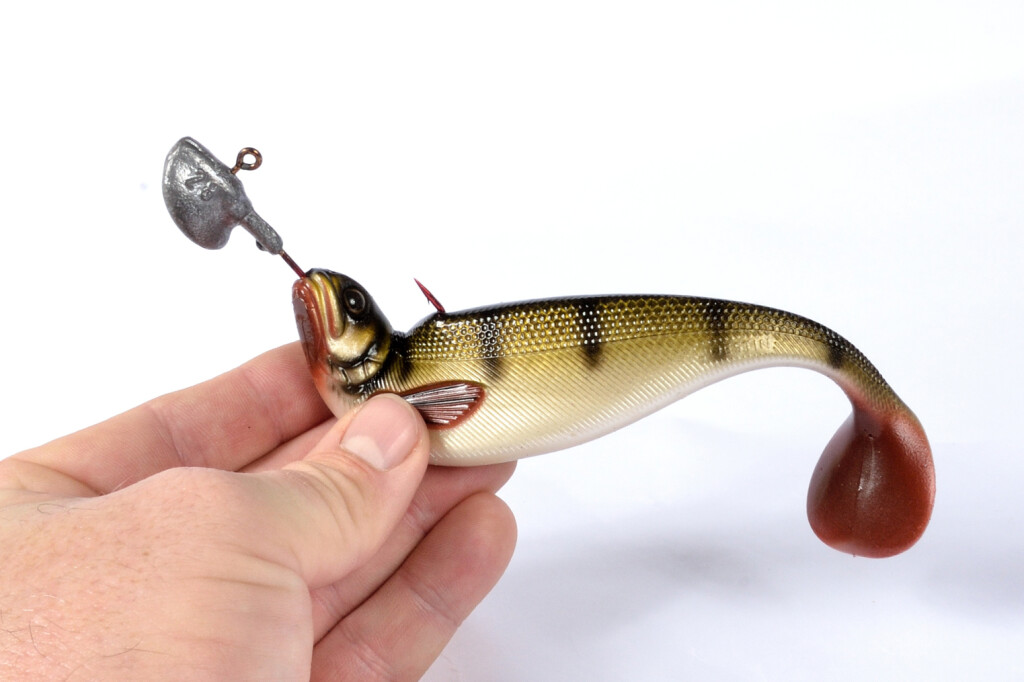
3. Make sure the point comes out on the centre line of the bait and the bait isn’t wonky.



